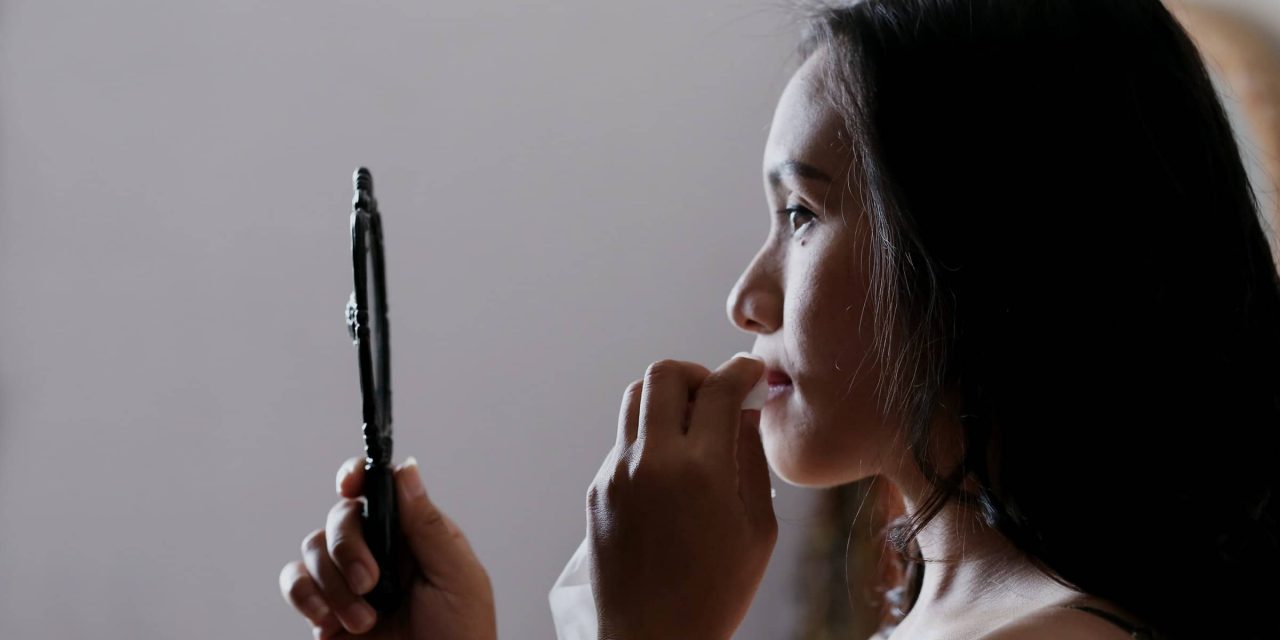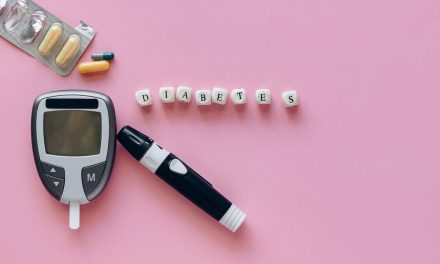Recently, the term body dysmorphia (BDD) seems to be hyping on platforms like TikTok. However, it is important to differentiate between body dysmorphia and insecurity. In this blog, you’ll learn the difference.
Estimated reading time: 7 minutes
In the past weeks I have been scrolling through countless TikTok videos. What surprised me is that the term body dysmorphia was mentioned in many videos.
These videos gave the impression that innumerable people suffer from body dysmorphia. For instance, there is this trend where creators share videos of themselves with the ‘Inverted’ filter turned on. (This is a filter that flips the camera screen horizontally, so you can see yourself how others perceive you.) After turning that filter on, these users realized that they perceive their body very differently compared to what others see.
Oftentimes, they add the term body dysmorphia to these videos. This makes it look like body dysmorphic disorder is a very common struggle for many people. Consequently, this awoke the curiosity within me to go down the rabbit hole and learn more about this topic.
Is body dysmorphia actually that common? And how to tell the difference between body dysmorphic disorder and insecurity or low self-esteem? These questions kept me wondering. Therefore, I had to investigate this further. In this blog, I’ll share my findings with you.
Here’s What You’ll Learn:
What Is Body Dysmorphia?
Before deep diving into the topic body dysmorphia, it is good to know what it is. Body dysmorphia, or body dysmorphic disorder (BDD) is the belief that people only see the flaws that you are seeing when you look in the mirror.
For instance, this could be a birth mark on your face, a big pimple or a scar that you are feeling self-conscious about. All of us struggle with insecure thoughts about our believed ‘flaws’. However, it is not automatically body dysmorphia.
Your focus on your flaws becomes body dysmorphia, when your thoughts and feelings about these flaws start to take over and consume too much of your time. Moreover, these convictions of yourself cause you great emotional disstress (like feeling anxious, sad, angry or self-conscious continuously).
In more extreme cases, body dysmorphia results in repetitive compulsive behaviors. For instance, behaviors such as comparing yourself too much to others, always checking the mirror or an overly excessive use of beauty products to hide your flaws. Also, you may avoid certain social situations because of your self-perceived flaws.
If you’d like to read more about body dysmorphic disorder, you may want to read the book ‘Understanding Body Dysmorphic Disorder’.
Where Does Body Dysmorphic Disorder Come From?
Now that you know what body dysmorphia is, you may wonder what causes it. Sadly, science has yet to prove where exactly it is caused. Similarly with many of the other mental health struggles we know about, BDD may be caused by a combination of different factors.
For instance, family history may be one of the causes. Other causes are abnormalities in the brain or negative evaluations of experiences regarding your body or self-image.
Additionally, recent research suggests that abuse or bullying, low self-esteem, perfectionism or competition with others, genetics, depression, anxiety or OCD are risk factors to experience BDD.
However, science still needs to discover the exact cause of body dysmorphia.

How Common Is Body Dysmorphia?
About 1 out of 50 people in the United States suffers from body dysmorphic disorder. Approximately 5 to 10 million people in the U.S. have this mental health disorder. Consequently, 1.7% to 2.9% of the overall population experience BDD.
Looking at these numbers, it becomes clear that the most of us most likely would not be diagnosed with body dysmorphic disorder. Even though social media makes it seem like many of us have BDD, this is not the case.
Therefore, it is wise to differentiate between body dysmorphia and the more common mental health struggles like insecurity or low self-esteem.
Body Dysmorphia vs. Insecurity: The Differences
When I started digging into the topic, I could not help but wonder. Was I ‘just being insecure’ or could it be body dysmorphic disorder? Therefore, I investigated the differences in symptoms between these two.
Common Symptoms Of Body Dysmorphia
Do you wonder if you have body dysmorphia? Here are some of the common symptoms of BDD:
- Being convinced that your appearance is ‘flawed’ and that you are ugly or deformed.
- Comparing your appearance with others continuously.
- Asking for reassurance from others about your appearance.
- Avoiding common social situations like work, school or parties.
- Being convinced that others will judge or mock you for your ‘flaws’.
- Perfectionistic characteristics.
- Covering up the ‘flaws’ in every way possible.
- Being overly preoccupied with the self-perceived flaws that others do not seem to notice.
- Continuously checking the ‘flaw’ in the mirror with the need to fix it immediately.
- Struggling to stop focusing on the self-perceived ‘flaw’.
- Feeling anxiety when being around other people because of the ‘flaw’.
Common Symptoms Of Insecurity
Insecurity, or low self esteem, is a common mental health struggle. According to Dr. Joe Rubino, approximately 85% of the world population are affected by low self esteem. Here are the common symptoms for low self-esteem:
- Strong inner critic and negative self-talk.
- Being sensitive towards criticism.
- Withdrawing socially and not wanting to be around other people.
- Hostility as a defense mechanism.
- Worrying excessively about personal problems.
- Feeling depressed and anxious.
- Comparing yourself to others and thinking that others are better than you.
- Struggling with accepting compliments.
- Focusing on negative aspects and neglecting your positive achievements.
Low Self-Esteem Or Body Dysmorphic Disorder?
After reading through these symptoms, it becomes clear that there is an overlap between these two. For instance, within both it is common to compare yourself to others and feel that others are better than you. In addition, anxiety and depression are also overlapping symptoms.
However, it becomes clear that body dysmorphia is focusing excessively on body ‘flaws’, while low self-esteem focuses on all areas of how we perceive ourselves – both physically and in terms of characteristics.
In addition, looking at the numbers, it is more likely that most of us belong to the 85% of the people suffering from low self esteem. Sure, most of us may worry about that pimple or the shape of our bodies every now and then. However, in most cases these insecurities do not shape our lives and overall self-value. Also, they do not limit us in our daily life and choices.
Nevertheless, for someone suffering from body dysmorphic disorder, this is a great struggle and takes up much space in their lives. In addition, it limits them to a much bigger degree compared to those struggling with low self-esteem.
Can Body Dysmorphia Be Self Diagnosed?
Now that you have read more about body dysmorphia, you may want to self diagnose. I get it, it is common for us to do that. However, please don’t self diagnose body dysmorphia.
It is a serious mental health disorder that should always be diagnosed by a mental health professional. Therefore, if you suspect that you have body dysmorphic disorder, make an appointment with somebody qualified to diagnose you.
Conclusion
After diving into the topic body dysmorphia, I can conclude that it is most likely that most of us don’t experience it the way social media makes it appear like.
This emphasizes the importance of doing your research before using terms like this in your social media content. It is good to raise awareness about body dysmorphic disorder. However, numbers show that the term should not be associated with something all of us could be diagnosed with. That is misinformation that we should avoid.
Do you believe that you experience low self-esteem or dysmorphia? Let us know in the comments!






